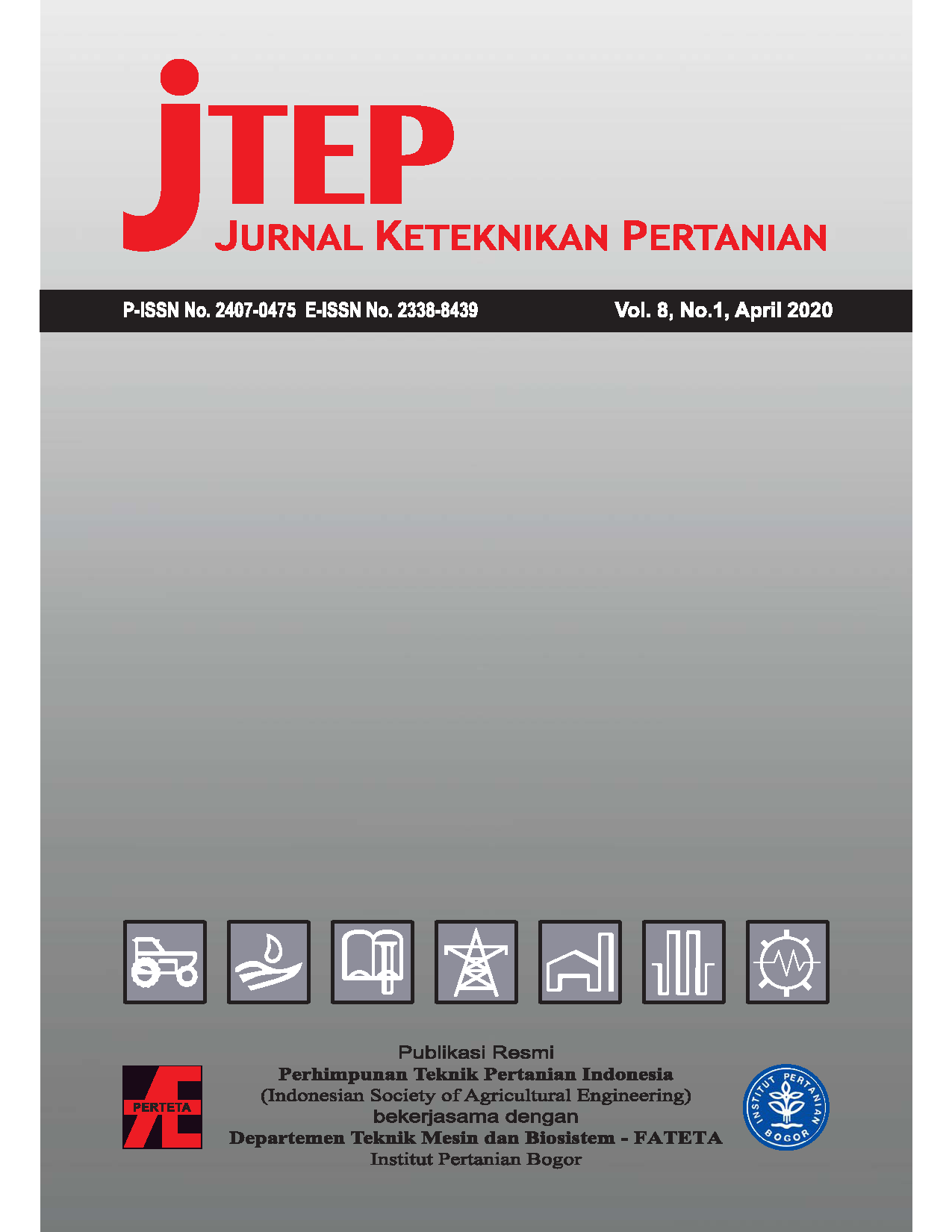Models of Moisture Sorption Isotherm and The Estimation of Red Ginger Powder Shelf Life in Various Packaging Materials
Abstract
Abstract
In the processing, the red ginger powder was dried at 50°C. Red ginger powder is hygroscopic, so it is easy to absorb moisture. This research aims to determine (i) the isothermic absorption curve model in red ginger powder with different fineness modulus and (ii) the expiration date using the critical moisture content method in various types of packaging materials. Moisture sorption isotherm of red ginger powder was determined by the static gravimetric method at 300C. The relationship equilibrium moisture content between relative humidity (RH) is described by the Hasley, Chen-Clayton, Henderson, Caurie, and Oswin Models. The Estimated shelf life is determined using the ASLT (accelerated shelf-life testing) method and calculated using the Labuza model with a critical water content approach. The results obtained that moisture sorption isotherm red ginger powder has sigmoid shape a type II. Henderson is the model that illustrates the accuracy of the ISA curve of red ginger powder of 60 mesh particle size while the Chen-Clayton Model illustrates the accuracy of the ISA curve of red ginger powder of particle size of 80 mesh. The shelf life of red ginger powder is 60 mesh particle size and using HDPE, PP, and aluminum foil packaging which is stored at 75% RH and 300C temperature is 118.85 days, 467.63, and 609.26 days, respectively. The shelf life of red ginger powder 80 particle size is 148.17 days, 582.98 days and 759.54 days.
Authors

This work is licensed under a Creative Commons Attribution 4.0 International License.
Authors submitting manuscripts should understand and agree that copyright of manuscripts of the article shall be assigned/transferred to Jurnal Keteknikan Pertanian. This work is licensed under a Creative Commons Attribution-ShareAlike 4.0 International License (CC BY-SA) where Authors and Readers can copy and redistribute the material in any medium or format, as well as remix, transform, and build upon the material for any purpose, but they must give appropriate credit (cite to the article or content), provide a link to the license, and indicate if changes were made. If you remix, transform, or build upon the material, you must distribute your contributions under the same license as the original.

